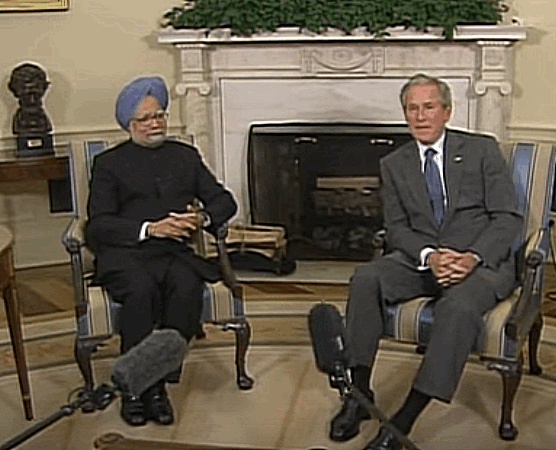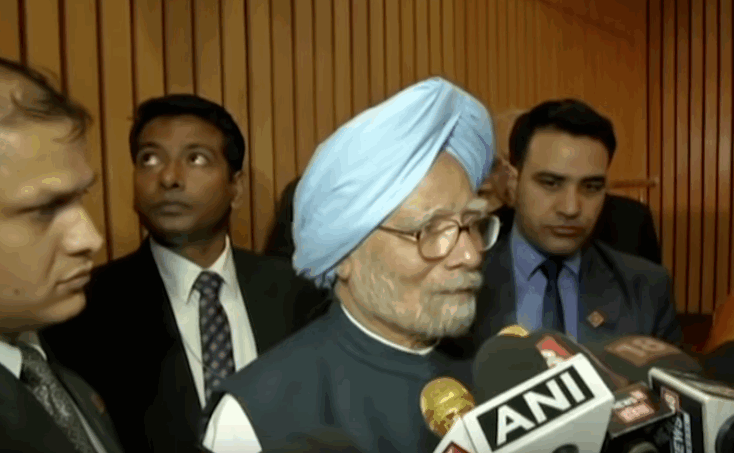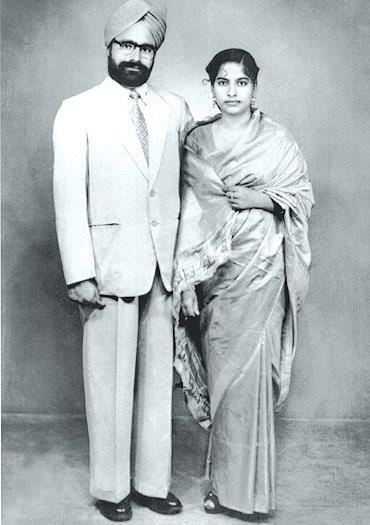Dr. Manmohan Singh is a politician and a renowned economist who was the Prime Minister of India for two terms. He was the first PM of India since Nehru to get elected to the PM’s office for 2 successive terms after completing a full 5-year term. He was also the first Sikh PM of India.
The upcoming Bollywood film ‘The Accidental Prime Minister’ is a biopic on the former PM. It stars Anupam Kher as Singh and is directed by Vijay Ratnakar Gutte. Written by Mayank Tewari, the movie is based on Sanjaya Baru’s book of the same name. The movie is slated to release on 21st Dec 2018.
Early Life and Education
Singh was born on 26th Sep 1932 into a Sikh family in Gah, Punjab, in British India. Gah is now a part of Punjab, Pakistan. His father was Gurmukh Singh and his mother was Amrit Kaur. His mother died when he was young and he was raised by his grandmother. During the 1947 Partition, his family moved from Pakistan to Amritsar, Punjab.
Singh attended Hindu College and later went to Punjab University then located in Hoshiarpur. He earned his bachelor’s and master’s degrees in Economics from the university in 1952 and 1954. He then went to the University of Cambridge and got his Economics Tripos. Subsequently, Singh returned to India and started teaching at his alma mater. In 1960, he went to the University of Oxford for D. Phil and got his doctorate in 1962.
Career
Dr. Singh has a vast work experience as presented below.
From 1966 to 1991
- Singh worked at the UNCTAD/United Nations Conference on Trade and Development from 1966 to 1969.
- He worked as a Professor of International Trade at DU’s Delhi School of Economics from 1969 to 1971.
- His career in bureaucracy started after Narayan Mishra inducted him in the Ministry of Commerce and Industry as an advisor.
- In 1972, he became the Chief Economic Adviser in the Ministry of Finance
- In 1976, he became the Secretary in the Finance Ministry
- He was a part of the Planning Commission for two years, from 1980 to 1982
- From 1982 to 1985, he served as the Governor of the Reserve Bank of India.
- He served as the Deputy Chairman of the Planning Commission from 1985 to 1987.
- From 1987 to 1990, he worked as the Secretary General of an economic policy independent think tank named South Commission, located in Geneva, Switzerland.
- In 1990, Singh returned to India as an Economic Affairs advisor to Prime Minister V. P. Singh.
- In March 1991, he was appointed as the Chairman of the UGC (University Grants Commission).
From 1991 to 2004
- In 1991, P. V. Narasimha Rao was elected as the new Prime Minister of India. The economy of India was in deep financial crisis. PM Rao selected Manmohan Singh as his Cabinet Finance Minister. As the Finance Minister of India, Singh brought about deep rooted changes in the economic changes and opened up the markets to free trade. This was strongly opposed by many parties, but Singh continued on the path to liberalization. These steps of Singh helped avert a financial crisis. The world also began to see Singh as an astute reforms driven economist.
- The incumbent government however lost the general elections in 1996. Singh served as the Leader of the Opposition in the Rajya Sabha from 1998 to 2004. Singh was first elected to the upper house of the Parliament from Assam in 1991. He retained his seat in the 1995 and 2001 elections.
- Singh fought the Lok Sabha elections in 1999 from South Delhi, but he lost to his rival.
From 2004 to 2014
- The United Progressive Alliance coalition (UPA) defeated the BJP led NDA in 2004 general elections and came to power. The chairperson of the UPA was Sonia Gandhi and she was designated to become the Prime Minister of India. She however withdrew and recommended Manmohan Singh as the Prime Ministerial candidate. Thus, Singh became the PM in 2004.
- Singh’s government executed numerous projects and brought in many new laws such as the Right to Information, the Rural Employment Guarantee scheme and Right to Information Act, and the Rural Health Mission, etc. This term of Singh as the PM was marked by rapid growth in the economy. It was however also fraught with many naxal insurgencies and terrorist attacks.
- The Left parties withdrew support from the government in 2008 after the civil nuclear agreement with America was signed by the government, and the UPA became a minority in the Lok Sabha. The UPA however continued to stay in power with support from other parties like the Samajwadi Party.
- Singh retained his Rajya Sabha seat from Assam in the 2007 Rajya Sabha elections.
- The general elections of 2009 were also won by the UPA and Singh was re-elected as the PM. This term was riddled with scams and allegations of scams such as those related to the coal block allocations, the 2G spectrum allocations, and the organization of the Commonwealth Games in Delhi in 2010, etc.
- Singh opted out from the race for the post of the PM in the 2014 general elections. The UPA lost the elections by a huge margin.
From 2014 to 2018
- Singh got re-elected to the Rajya Sabha in 2013. As of 2018, he is a member of the Rajya Sabha.
- Since 2016, he has served as the Jawaharlal Nehru Chair at Punjab University. He is not involved in any research but has interactions with students and varied departments to inspire and encourage them.
Manmohan Singh – Wife Gursharan Kaur (Photo)
Personal Life and Trivia
- Singh is married to Gursharan Kaur. The couple married in 1958. They have 3 daughters Upinder Singh, Amrit Singh, and Daman Singh.
- Ashok Pattnaik, the current CEO of India’s National Intelligence Grid, is the son-in-law of Dr. Singh.
- Amrit Singh works as an attorney for the American civil rights organization, the ACLU/American Civil Liberties Union






